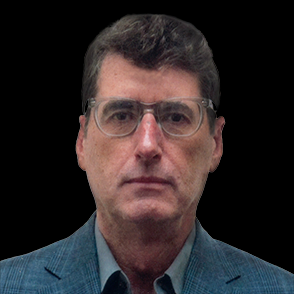
DSEI 2023, EXCEL, LONDON, UK (Hall H2-552) – September 12, 2023 – Curtiss-Wright’s Defense Solutions Division has announced the introduction of an innovative solution for system integrators that require high voltage turret drive stabilization system (HV TDSS) for new platform designs or for upgrading legacy motion control systems. The HV TDSS system converts, stores, and controls the platform’s existing continuous low voltage 28V systems and boosts power to 750V as needed. The HV TDSS system is ideal for aiming and stabilizing turrets on mobile platforms and for rapid direct drive architectures on mobile weapons systems. This innovative solution can be easily integrated into a vehicle’s existing power architecture without significantly impacting size, weight, power, and cost (SWaP-C). The system works with existing Curtiss-Wright gear drives, motor, gyroscopes and hand controllers. It is designed for use in a wide range of applications, including large-caliber turrets and main battle tank turret drive and stabilization systems, high-speed motion control systems (e.g., active protection systems, optical tracking systems, and directed energy weapons), naval weapon systems on warships and submarines, and mobile vehicle applications, such as mobile radar station, cranes, trucks, and excavators.
The ability to provide high-voltage power on platforms is a rapidly growing requirement as high peak power is often needed to accelerate a high-inertia load – such as a turret or a weapons system – to a precise position in the shortest possible time. Previously, the delivery of short bursts of peak power came with an associated risk of damage to the vehicle’s electrical systems. One alternative approach, which employs a higher current system, requires large banks of heavy batteries and wastefully produces large amounts of undesired heat.
Curtiss-Wright’s new HV TDSS system eliminates the negative consequences of higher current systems. It leverages the continuous low-voltage power available on mobile platforms to enable the high-voltage energy buffering required for the higher voltage, short-burst peak power. It also allows a controlled flow of regenerative power back into the power architecture (e.g., energy storage or power source). The modular solution includes a DC/DC converter (converts 28V battery power up to 750V), an energy storage module (stores the power until needed), and a high-voltage motion controller (controls and delivers the electrical power to the drive systems). An optional load dump protector module protects electrical components according to MIL-STD-1275 and DEF STAN 61-5 and includes an inrush current limitation and reverse polarity protection.
The HV TDSS meets IEC 61508, IEC 61800, and ISO 6469 functional safety requirements. Curtiss-Wright’s modular, open standard TDSS approach enables the customer to assemble the system exactly according to their requirements.
About Curtiss-Wright Turret Aiming and Stabilization Drive systems
Curtiss-Wright turret aiming and stabilization drive systems are designed to deliver scalable functionality and power adaptability to ground vehicle designers and turret manufacturers. The turret drive stabilization system (TDSS) is designed and manufactured by the Defense Solutions facility in Neuhausen am Rheinfall, Switzerland. The modular TDSS design enables system integrators to select the exact aiming and stabilization solution that their platform requires - from a manually operated drive all the way up to a highly sophisticated, stabilized drive system – while streamlining enhancements and/or system modification for use on a different platform. The TDSS approach is significantly more cost-effective and flexible than traditional bespoke aiming and stabilization system alternatives. TDSS is designed to make it easy for system integrators to configure only the system that they require now while adding increasing levels of stabilization as their mission evolves. TDSS system components can be easily adapted for use on different ground vehicle turrets to meet dynamic program requirements including performance and precision.
Curtiss-Wright TDSS solutions deliver unmatched target location accuracy and turret stabilization while providing system integrators with an unprecedented level of freedom to define and deploy the exact solution they require, when they require it, with the ability to upgrade and add stabilization functionality as system requirements change. Because the TDSS uses standard system configurations, it speeds system development and enables programs to reach demonstration and production phases more rapidly. The use of preconfigured TDSS system components also reduces the time and costs associated with the requirements definition process.
About TDSS System Components and Configuration Levels
TDSS components include rotary gear drives, linear gear drives, motion controllers, gyroscopes, hand controllers, and system software.
About Curtiss-Wright Corporation
Curtiss-Wright Corporation (NYSE:CW) is a global integrated business that provides highly engineered products, solutions and services mainly to Aerospace & Defense markets, as well as critical technologies in demanding Commercial Power, Process and Industrial markets. We leverage a workforce of approximately 8,400 highly skilled employees who develop, design and build what we believe are the best engineered solutions to the markets we serve. Building on the heritage of Glenn Curtiss and the Wright brothers, Curtiss-Wright has a long tradition of providing innovative solutions through trusted customer relationships. For more information, visit www.curtisswright.com.
###
Note: Trademarks are property of their respective owners.
